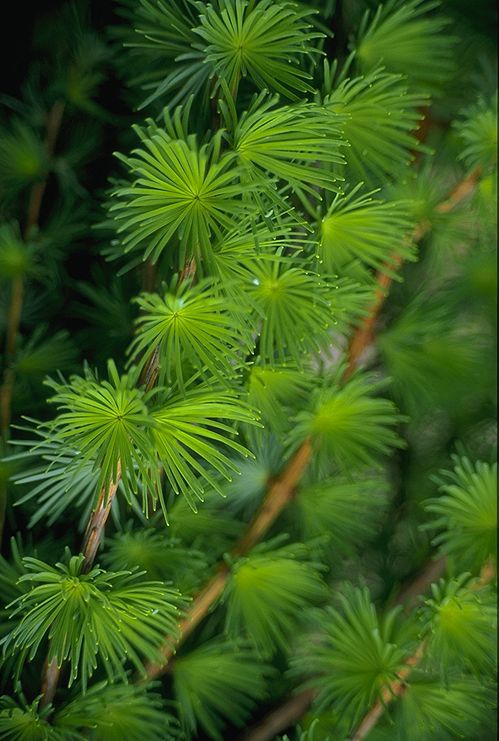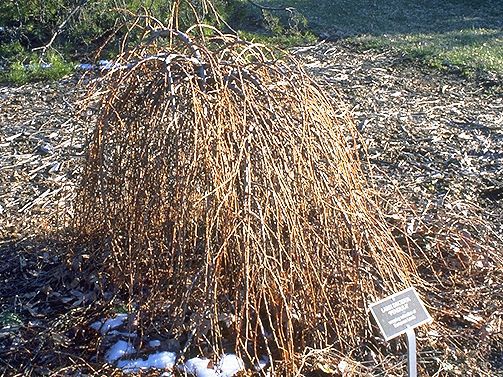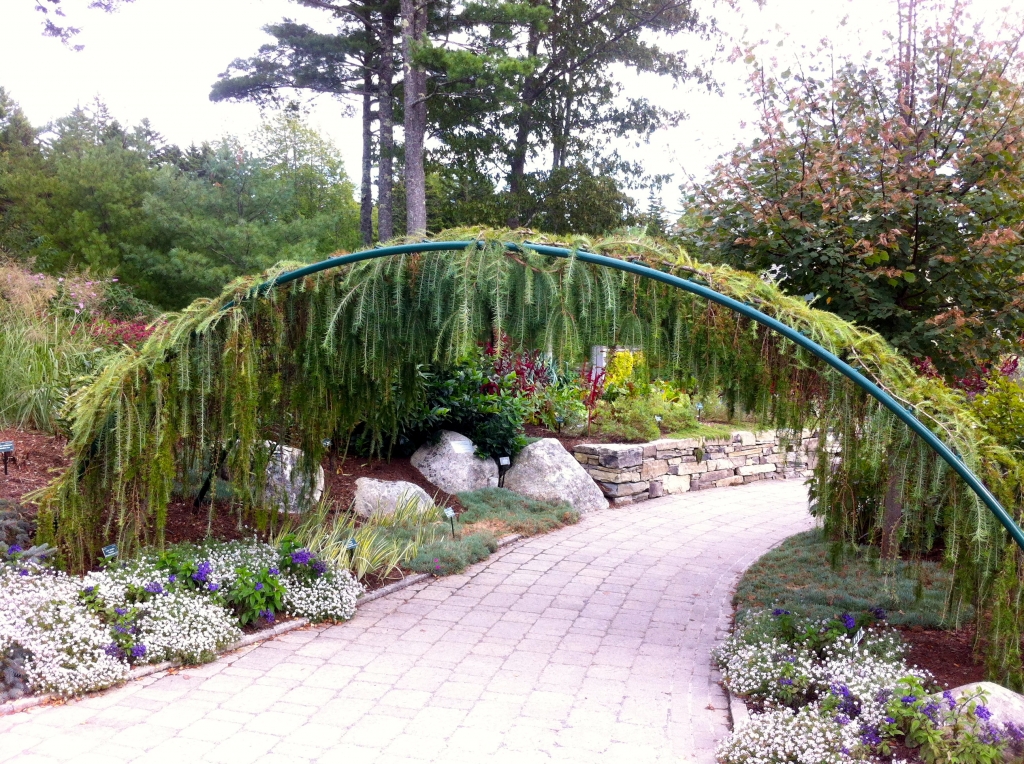
Larix decidua 'Pendula' bears luminous, fresh, green foliage that covers this fast-growing weeping tree in the spring. In the fall, there is a glow of yellow before the needles drop to reveal tawny-brown twigs. This plant can take on a multitude of forms depending on how it is trained and staked. Terminal branches will push up to 12 inches (30 cm) each year, creating with time, an imposing specimen in the landscape.
This is an extremely old cultivar in the nursery trade, likely first described in botanical literature as early as 1836, perhaps 1789, leading one to believe that multiple clones likely exist. In today's nursery trade, a very similar Japanese larch, Larix kaempferi 'Pendula' has taken precedence as the most-commonly seen weeping larch seen in gardens and arboretums. There is also a problem that they are commonly interchangeably mislabeled. The easiest way to discern which is which is through examination of branchlets. L. decidua is always tawny brown in color, while L. kaempferi is pinkish-purple.




